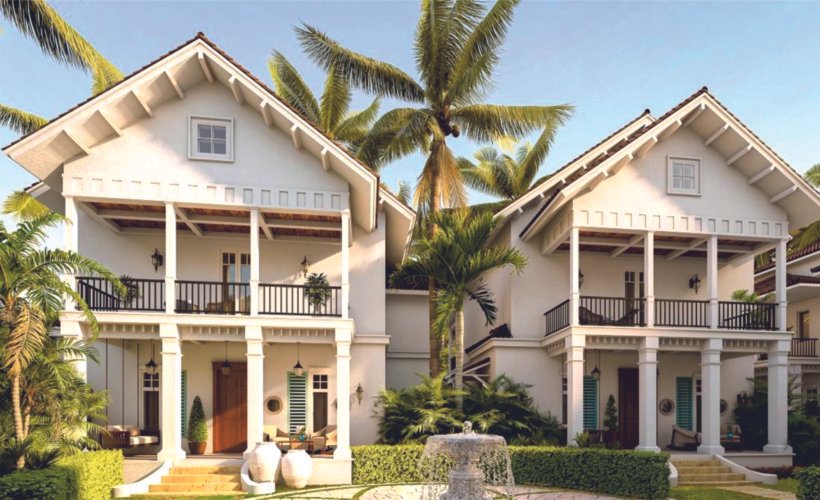
As Goa transforms into a coveted destination for high-net-worth individuals, balancing rapid development with environmental and social sustainability becomes crucial
Goa’s real estate market is undergoing a notable transformation, extending its appeal beyond its traditional roles as a holiday and retirement destination. Fuelled by heightened demand from affluent individuals and non-resident Indians (NRIs), real estate developers from across the country are preparing to introduce a diverse array of new projects in the state, including luxury villas, high-end apartments, and plotted developments.
Major developers such as DLF Ltd and Prestige Group, along with mid-sized firms like Eldeco from the Delhi-National Capital Region, are gearing up to launch projects in Goa. This growing interest underscores Goa’s emergence as a prime second-home market, a trend accelerated by the COVID-19 pandemic’s impact on lifestyle preferences. According to property advisory Savills India, Goa’s appeal to second-home buyers is bolstered by its attractive rental yields, ranging from 5-8%.
Historically known for its retirement communities and as a holiday retreat, Goa is now experiencing an influx of younger professionals from metropolitan areas such as Mumbai, Delhi, and Bengaluru. The state’s unique geographical features bordered by the Arabian Sea and the Western Ghats and its enduring Portuguese architectural influence continue to attract new residents.
Karan Singh, Vice President of India Sotheby’s International Realty, notes that over 90% of the demand for properties in Goa originates from outside the state. Buyers from cities including Indore, Surat, Ludhiana, and Ahmedabad are driving this trend. Singh anticipates that many more developers from the Delhi-NCR region will enter the Goa market over the next 3-4 years.
Gurugram-based DLF Ltd is set to make a significant entry into the Goa market with an exclusive high-end project. This development, featuring 62 luxury villas on a 38-acre hill, is priced between `140 crore and `150 crore each, making it one of the region’s most expensive projects. This initiative aims to replicate the prestigious allure of Lutyens’ Delhi in Goa.
Similarly, Bengaluru-based Prestige Group is expanding its presence in Goa with several new projects, including the upcoming ‘Prestige Biosphere,’ a luxury villa development. Eldeco, under its Terra Grande segment, will also debut its first Goa project this year, focusing on high-end luxury villas.
Rajesh Sheth, President of the Confederation of Real Estate Developers’ Associations of India (CREDAI) – Goa, comments on the growing trend for luxury properties and second homes in the state. “We anticipate that this trend will continue and

intensify over the next 3-5 years. Pan-Indian developers like DLF are launching ultra-luxury second homes priced above ` 50 crore. Owning a property in Goa is a significant aspiration for many across the country, though buyers will remain discerning about value. Additionally, the positive momentum in the industrial sector, driven by government initiatives, is expected to bolster the real estate market.”
Sheth also highlights that there have been no major changes in Goa’s zoning laws or development regulations recently. “Development regulations are evolving, but unless drastic changes occur, real estate projects will likely remain unaffected. We hope the government will promote sustainable development through collaborations with the Indian Green Building Council (IGBC) to ensure more certified green projects.”
Kumar Siddharth of CITIHOMES notes that NRIs and high-net-w

orth individuals are drawn to specific features in luxury properties. “Privacy is a key demand among buyers seeking luxury villas, with private pools and expansive garden spaces being highly sought after. These features not only provide a secluded retreat but also offer higher rental returns, making them popular among those seeking a second home. Additionally, high-end apartments located along the coast are preferred for their proximity to the beach and potential for significant rental returns.”
Siddharth also provides insights into notable and innovative upcoming projects in Goa. He highlights that several new developments are capturing significant attention due to their innovation and quality. Among these are projects by Isprava and Vianaar, both of which are renowned for their exceptional construction standards and luxury offerings. Additionally, new entrants to the market are preparing to launch their inaugural projects, promising high-quality construction that meets the standards set by established brands. These emerging developers are expected to further enhance the appeal of Goa’s real estate landscape. Denzil Xavier of Denzil Xavier Real Estate Consultants
observes, “Goa has long attracted the interest of high net- worth individuals and the ultra-wealthy due to its serene
Indo-Portuguese culture and natural beauty. However, this surge in demand poses significant challenges. The rapid increase in property prices is making it increasingly difficult for local residents to afford housing, potentially leading to adverse social impacts.” Xavier further emphasises, “The growing demand for second homes is driving
property prices out of reach for many Goans, particularly in rural areas. Without intervention, this could force local residents to leave Goa or live in sub-standard conditions. The government must implement policies
that promote sustainable development and prevent environmental degradation caused by large-scale projects.”

Denzil Xavier Real Estate Consultants
As Goa continues to attract high-net-worth individuals and developers, addressing the associated environmental and social impact is imperative. Prioritising sustainable development practices and policies will be crucial in ensuring that the real estate sector’s growth does not compromise the state’s unique natural beauty and the well-being of its local population. Balancing economic development with environmental preservation and social responsibility will be essential for maintaining Goa’s appeal while safeguarding its future.





